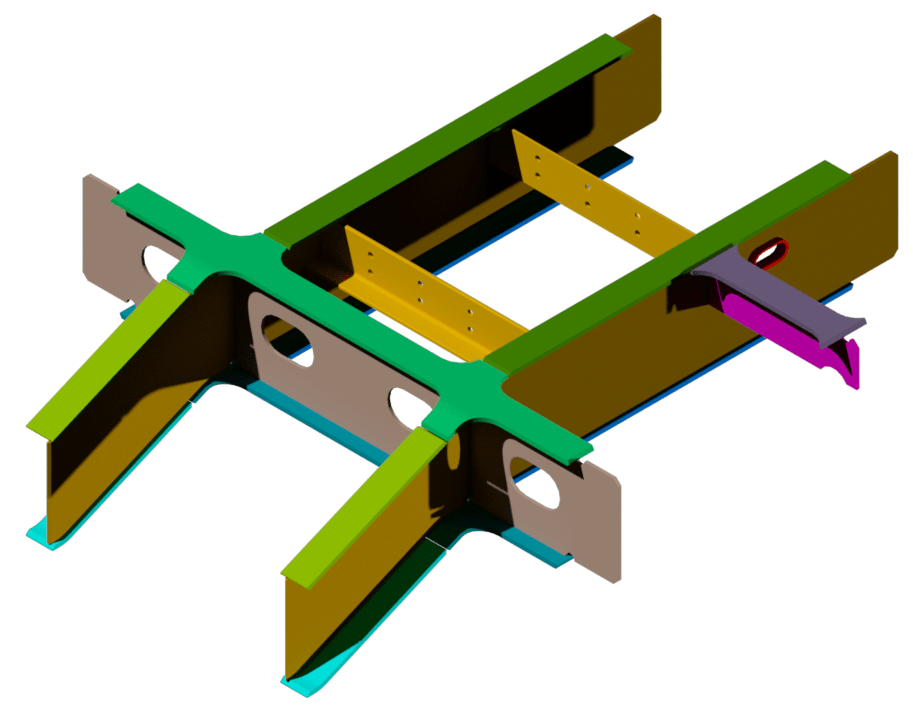Well we are still here, not that you would notice if you were waiting for any news or an update! Project 22 is still the most realistic organization if you want to see a North British diesel locomotive re-created. This is a new build project, not a rebuild or a conversation, this route was adopted when the difficulties of converting a diesel-electric locomotive was investigated and ruled out due to the amount of work needed to alter the mainframe to take a hydraulic transmission, as the structural complication outweighing any saving in cost to build a new mainframe.
With that explained what about an update, well that’s more complicated as P22 doesn’t really have the infrastructure to be pro-active with any aspect of the society or even the website, consequently the lack of updates which has given a poor impression of the Society to investors and the public and has been for 12 months or more.
Internally, P22 is progressing, admittedly slowly, but, certainly. There is a small technical team beavering away building the CAD designs, purchasing drawings and manuals and we are still investing money into the group with the view of purchasing a transmission when we are ready (or when we find one)
P22 started out of the traps like a whippet and made fantastic strides in the first 2 years, we seemed to have a winning formula. It wasn’t long before we could see that we had to acknowledge that our marketing was working so much faster than our ability to provide any real technical or tangible progress allowed. We were also experiencing some real issues within the committee on the best way forward for P22, which did very nearly finish the project. If it wasn’t for one or two committee members refusing to give up it would have folded 2 years ago.
This was the point we realized that P22 was a fantastic project and as a team, we knew how to build the loco and we were confident of raising the funds. Our downfall was maintaining a committee, there were some big egos in there including mine. At this stage, we had the option of stopping and honoring our promise of returning any funds donated back to investors or keep on going with a low profile and building a proper sustainable technical case for building a new locomotive. We chose the latter, even though I didn’t believe we would be able to hold it all together. My job has been to look after the money and keep it safe and not let anyone spend it unless it provides value to the build.
We have an original NBL/MAN engine and a number of other components in storage, we have gained an incredible amount of information and specific details relating to Class 22 locomotives and how they were built, maintained, the history and the data we have is vast.
We are not yet ready to relaunch, but we are not far away, our aim of starting some form of construction by 2022 is certainly on the cards. We would like to take to the road again next year with the sales stand. Unfortunately, our current committee can’t support this action and this needs to be addressed we need to attract enthusiastic committee members who can pick up the reigns and help take us forward. Over the past 4 years, we have many dozens of people volunteers to help P22, but we haven’t had the resources to allow us to utilize this help and give leadership and guidance.
It would be a shame to see all the hard work and commitment that has been put into P22 be wasted as we still firmly believe there is a will to see this locomotive built. This project is possible and very probable, but it’s also very vulnerable. While this isn’t an appeal for help, it’s the truth about where P22 is today.
Having said that, we really do need help! We are open to hearing any comments or advice and welcoming any hard-working like-minded people to step up as we need to build a strong committee again, something that must happen if P22 is to succeed. We especially need people who know how to run and manage a charity, a full-time webmaster and a host of others.
Richard Benyon
Chairman,
On behalf of the Committee.





Recent Comments